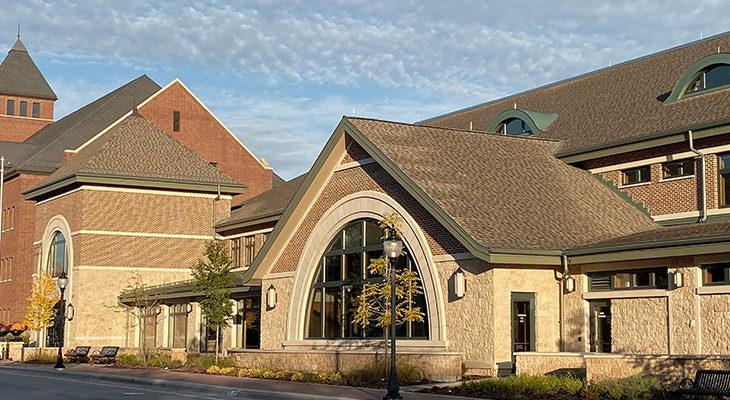
Masonry Advisory Council names Arlington Heights Police Department building Best Governmental project in Excellence in Masonry architectural design competition; judges comment on facility’s focus on community
Over the past 25 years, the Village of Arlington Heights, Illinois has solidified its downtown image with traditional-looking masonry facilities. Examples include the village hall (built in 2008) and the fire station (built in 2006), both of which feature brick and stone exteriors with traditional architectural massing and detailing.
When the village challenged Legat Architects to design a new police station that would rise between those two, masonry was the obvious choice. Legat set out to create a historically sympathetic design that complemented and enhanced but did not replicate the buildings to its east and west. The resulting 70,500-square-foot Arlington Heights Police Department facility uses large arched openings, lighter brick, and a limestone base to create its own identity, respect the heritage of its neighbors, and welcome the community.
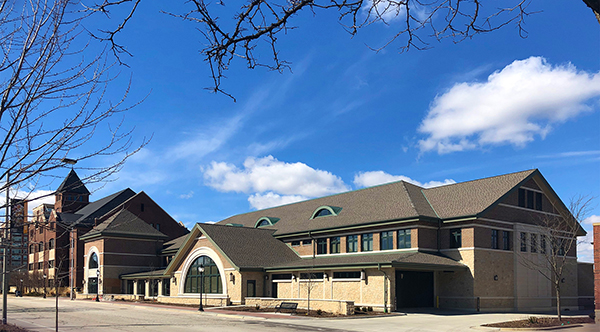

In December 2022, the Masonry Advisory Council honored the station with an Excellence in Masonry Award for Best Governmental project. The competition, which drew nearly 100 entries, applauds the creative and functional use of brick, block, and stone materials for projects in the Chicago and northwest Indiana regions. The eight judges included licensed architectural and engineering professionals, as well as instructors in the International Union of Bricklayers and Allied Craftworkers District Council Training Center.
“It’s unusual to see the robust use of masonry and the way that different materials blend together both expressively and tastefully,” said juror Dan Craig, AIA, senior associate with Shears Adkins Rockmore. “It’s a very inviting space for a larger community, and it exudes the idea that the Arlington Heights Police Department cares about its community and wants to keep it safe. That’s a great message for masonry.”
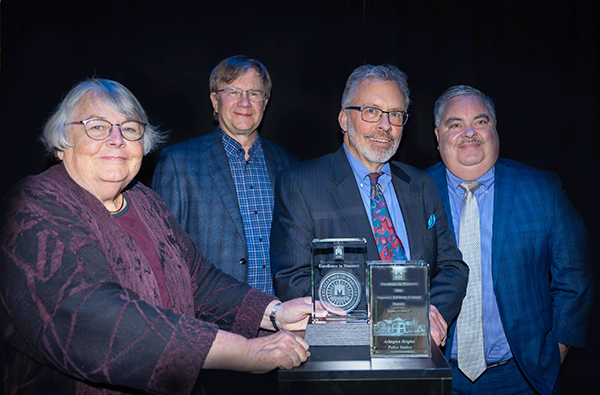
Arlington Heights Police Chief Nick Pecora and Legat’s Steve Blye, both Arlington Heights residents, accepted the award at a ceremony at the Museum of Science and Industry on December 3, 2022.
Watch the video below to learn more:
In 2020, the Arlington Heights Police Station received a national Project of the Year Award from the American Public Works Association.
The architectural and engineering team includes the following: Legat Architects (architect of record), McClaren, Wilson & Lawrie (public safety consultants), Upland Design Group (landscape architects), 20/10 Engineering Group (MEP engineers), Larson Engineering (structural engineers), Mackie Consultants (civil engineers).
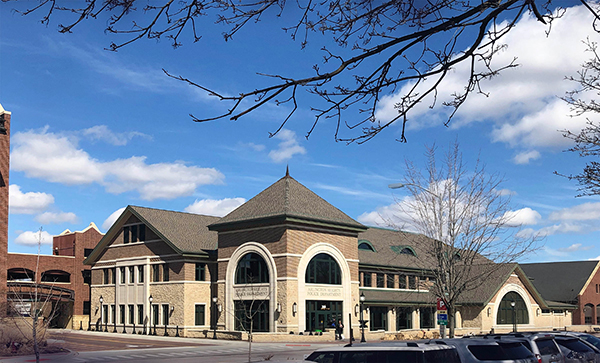
Richardsonian Romanesque: Looking to the Past to Prepare for the Future
The police station design draws from the Richardsonian Romanesque style popularized by American architect Henry Hobson Richardson in the nineteenth century.
“Rustic textured brick, smooth limestone arched windows and sills, split-face tumbled stone masonry walls, and water-permeable brick pavers were the natural choices,” said Blye. “They relate well to the village aesthetics, were easy to install in various patterned and arched configurations, were available regionally, and fit the construction budget.”
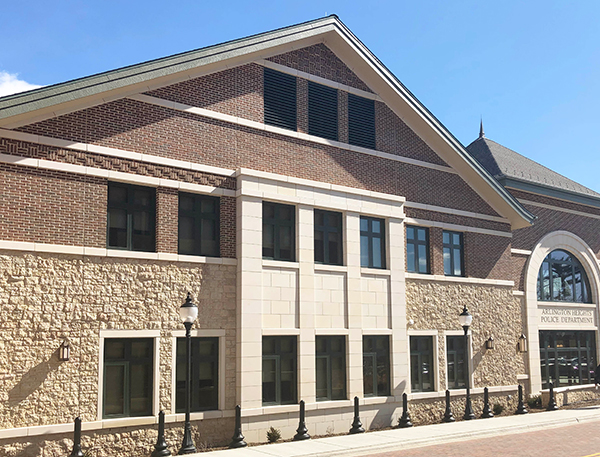
Brick also promoted cost savings for the village: whereas the sides of the station facing the street use elaborate traditional brick and limestone almost equally, the sides facing less visible train tracks use mostly brick masonry in simpler geometries but retain the brick trim and limestone details from the front.
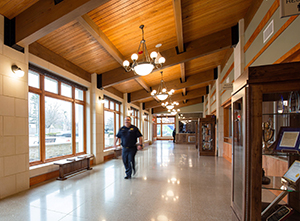
The use of masonry goes beyond the building. Multicolored patterned brick pavers on the public sidewalks and permeable pavers on the staff parking not only minimize stormwater runoff but also drastically reduce the size and cost of buried tanks required to retain rainwater on a limited site.
To strengthen the building’s sustainability, the village proposed that the project use logs from the ash trees it cut down after an emerald ash borer infestation. A sawyer and several woodworkers used the logs to create structural wood ceiling planks, wood paneling, wood trim, and even the modern wood window mullions seen above.

Masonry Passes the Test
Just before the Arlington Heights Police Station opened, its masonry structure was put to the test when an intoxicated driver, traveling at over 100 miles per hour, careened into the anti-terrorism security planter walls. His car tumbled numerous times and slammed into the stone-and brick-clad entry tower.
Although the car punched a hole through the wall, the masonry above remained intact, and the entry lobby and police front desk remained undamaged. The mass of the stone masonry planter walls prevented potential injuries and more serious damage.
“Hand-laid brick and real stone masonry will always endure aesthetically, structurally, and economically,” said Blye.
Contact us with your facility design challenges or comment below to share your thoughts on this post.


